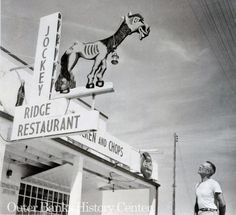216BC: Continuing his invasion into the heart of the Roman Republic, Carthaginian general Hannibal meets and defeats in detail a massive Roman army nearly twice his strength in the Battle of Cannae, on the lower Adriatic coast of Italy. This is the third major engagement since his winter crossing of the Alps. After his first two victories, his army systematically pillaged their way down the Italian peninsula, creating a rising sense of panic in Rome itself. In response, the Senate ordered two proconsuls to combine their armies to stop the Carthaginians.
On the field of battle, the Romans formed into a deep infantry wedge with supporting cavalry on the flanks. For his part, Hannibal stretched his infantry across a wide front, inviting a direct attack against his center. Two African divisions were held in reserve on both flanks, not connected to the basic line. When the attack began, Hannibal began carefully withdrawing his center until the Roman force became concentrated en masse deep inside a crescent of Carthaginian troops. As the Romans’ positions began to collapse from the rear, Hannibal ordered attacks from both flanks, essentially surrounding the entire Roman army, which degenerated into panic as the Carthaginians then reversed their withdrawal and began to slash their way through a Roman mob who had nowhere to go. Of the 86,000 Romans and their allies who began the battle, over 45,000 were killed outright, in addition to 4,500 captured infantry and cavalry. Of Hannibal’s 56,000 troops, his losses were between 5-7,000. The battle was remains a classic in the study of leadership and tactics, as Hannibal himself fought from the center, maintaining close control over every movement of his forces. The double-envelopment “pincer” movement remains a time-tested goal of ground combat (and air and sea for that matter) to this day.
70AD: Culminating their relentless Siege of Jerusalem, the Roman army under the command of Titus (later to be Titus Ceasar) loots, burns, and completely demolishes the Temple that had been the center of Jewish worship for a thousand years. The destruction is mourned annually as the fast of Tisha B’Av. Note: in the name of accuracy, the actual structure that fell this day was the Second Temple (also known as Herod’s Temple), which was a complete on-site rebuilding of 10th c. BC Solomon’s Temple eighty years prior to the Roman siege. The famous Western Wall which remains today is part of the retaining wall built by Herod to consolidate the entirety of the Temple Mount summit, and includes within its perimeter much of Solomon’s original foundation stones, as yet not exposed to daylight these two thousand years later.
1305: Scottish patriot and nationalist William Wallace is captured near Glasgow and hauled off to London, where he is accused, tried, convicted and executed for treason against Edward I. As he faced his accusers, Wallace declared: “I could not be a traitor to Edward, for I was never his subject.” Guilty.
1492: Genovese mariner Christopher Columbus departs westward from Palos del la Frontera, Spain to prove a new ocean route to the Spice Islands of the Indies. His crew and his three ships- Nina, Pinta and the flagship Santa Maria– are financed by Queen Isabella I of Spain, who believed Columbus’ sales pitch that the earth was round and small enough that Spain would profit mightily from a new route to the riches of the east. He was partly right, but the riches and power would come from the west.
1620: The chartered merchant ship Mayflower, in company with the Speedwell, departs Southampton, England on its first attempt to reach North America with its Puritan passengers, who plan on colonizing “North Virginia” near the mouth of the Hudson River. After a very short day at sea, Speedwell develops severe leaks and the two ships return to port for repairs.
1704: As part of the War of Spanish Succession, the Spanish peninsula of Gibraltar is captured by an Anglo-Dutch fleet commanded by Sir George Rooke. Eventually annexed into the British Empire, it remains a thorn in the side of Anglo-Spanish relations to this day.
1789: As their reform movement continues to gather momentum, the French National Assembly takes an oath to “end feudalism” and “abandon [their own] privileges,” a bit of public grandstanding that probably helped them rationalize- (the Age of Reason)- the cascading excesses of France’s accelerating descent into revolution.
1792: Birth of Percy Bysshe Shelley (d.1822), the English poet widely regarded as the greatest lyricist in English history. His most famous poem, Ozymandias, posits the inevitable decline of even the most powerful institutions of men. Shelley lived an “unconventional life” with and around fellow Romanticists Byron and Keates. His uncompromising idealism helped fuel the intellectual “-ism” movements of the mid-19th century, including Thoreau’s Transcendentalism and Marx’s Communism, among others. He drowned under mysterious circumstances while sailing his schooner between Leghorn (Livorno) and Lerici in northern Italy. His second wife, Mary Shelley (1797-1851) was a noted author in her own right, best remembered for her Gothic novel, Frankenstein: or, The Modern Prometheus.
1864: Rear Admiral David Farragut leads a US Navy flotilla into the fortified confines of Mobile Bay, with the mission of permanently closing the port to further trade and blockade running. During the previous year, while Farragut’s attentions were earlier turned to returning the Mississippi River to Union control, the Confederates fortified Mobile with three forts ashore and a minefield guarding the main channel into the bay. Farragut’s flotilla entered the bay at dawn, guns blazing, and overwhelmed the shoreward defenses. When one of his captains slowed his ship due to the threat of the mines (“torpedoes”), Farragut responded with “Damn the torpedoes! Full speed ahead!” Of note from the Confederate perspective was the single-handed fight of the ironclad ram CSS Tennessee against the entire Union fleet, which took three hours to finally force its surrender.
1889: At Auburn Prison in New York, the first execution by electrocution is conducted on convicted murderer William Kemmler. It took two jolts to do the job; the first 17 seconds of 770 volts blew a fuse before killing him. On the second attempt 1,030 volts were applied for two minutes. Power was shut off when smoke started emanating from his head. Dr. Albert Southwick, a dentist who was a strong advocate of electrocution as a more humane death declared, “We live in a higher civilization from this day on.” George Westinghouse, who actually put electrical power to practical application elsewhere, stated, “They would have done better with an axe.”
1892: The parents of Lizzie Borden are found murdered in their Fall River, Massachusetts home. Lizzie herself is acquitted of the murders in the sensational trial that follows.
1900: Birth of war correspondent Ernie Pyle (d.1945), whose personalized reporting from the European Theater of Operations and later the Pacific Theater made him the most well-known name in journalism. He was killed by a burst of Japanese machine gun fire on Ie Shima, near Okinawa.
1914: After receiving a negative Belgian response to their request to cross their territory to attack France, the Imperial German army crosses the border anyway, meeting stiff resistance from the Belgian army. With their guarantee of Belgian neutrality at stake, not to mention their alliance with France in the Entente Cordiale, Great Britain declares war on Germany. The Wilson administration in United States declares an official policy of neutrality.
1914: Germany declares war on France.
1914: Great War- the descent continues: Serbia declares war on Germany. Austria declares war on on Russia. Germany sorties 10 Unterseeboten from their base in Helgoland on their first wartime patrols against the Royal Navy.
1926: Harry Houdini performs his most difficult escape, spending 91 minutes in a sealed tank before emerging unscathed.
1928: Birth of 1960’s artist Andy Warhol (d.1985). American artist, filmmaker, and producer who became a leading figure in the Pop Art movement. Born Andrew Warhola to Czechoslovakian immigrants, he studied art in Pittsburgh and moved to New York City after graduating, shortening his name to Andy. Warhol gained notoriety in 1962 for his paintings of everyday items like Campbell’s soup cans and Brillo boxes. Warhol’s mass-produced art was controversial because it challenged widespread assumptions about art as a form of personal expression and about the value of originality. Warhol also produced films, made photographs and sculpture, and co-founded the celebrity magazine Interview. Throughout his wide-ranging career, Warhol recognized the power of the media, predicting in 1968 that in an increasingly media-saturated culture, “Everyone will be world famous for 15 minutes.”
1930: Birth of Neil Armstrong (d.2012)- X-15 pilot; Gemini-8 Commander; Apollo-11 Commander; First to step on the Moon)
1934: Death of Paul von Hindenburg (b.1847), hero of the Great War (victor of the Battle of Tannenberg), and twice elected President of the German Republic. The old war horse helped legitimize Adolf Hitler’s electoral rise to power in 1932. When he died, Hitler assumed the office of the Presidency in addition to the Chancellorship, formally assuming the powers as dictator of the German state.
1936: American Jesse Owens wins the 100 meter dash at the 1936 Berlin Olympics.
1943: In the South Pacific, the fast patrol torpedo boat PT-109 is sliced in half and sunk by a Japanese destroyer. Its skipper, Lt John F. Kennedy, rallies his stricken crew to swim to a nearby island, saving all but two of them.
1945: A single American B-29 bomber, nicknamed Enola Gay, drops the world’s first operational atomic bomb over the Japanese industrial center of Hiroshima. The 1200 foot above-ground-level burst flattens all but the most robust masonry buildings and the thermal pulse ignites and burns to ash the 90 percent of the city that is built of wood. 70,000 Japanese are killed immediately, with tens of thousands later dying of the direct effects of radiation and burns.
1948: Former journalist and communist fellow-traveler Whittaker Chambers publicly accuses former State Department official Alger Hiss of being a Soviet spy. He was right.
1958: USS Nautilus (SSN-571), the world’s first nuclear-powered vessel, crosses the North Pole during its historic under-ice transit of the Arctic Ocean.
1961: Birth of Nobel laureate (not a joke) Barack Hussein Obama.
1962: Birth of right-handed pitcher Roger “Rocket” Clemens, winner of seven Cy Young awards and one of only four pitchers to achieve more than 4,000 strikeouts in their careers.
1962: Death of Marilyn Monroe (b.1926).
1964: On patrol in the Gulf of Tonkin off the coast of Vietnam, the US destroyer USS Maddox (DD-731), operating 28 miles offshore, is attacked by three North Vietnamese torpedo boats. The boats launched several torpedoes but were driven off by US gunfire, including strafing by F-8 fighters from the USS Ticonderoga (CVA-14). Two days later, Maddox and USS C. Turner Joy (DD-951) were back on station around 11 miles offshore in heavy weather when they were allegedly attacked again by North Vietnamese gunboats. I normally hate using the word “allegedly,” especially 60-odd years after the fact, but the fact is this: the indications of a second attack were- and remain- highly ambiguous, mostly due to heavy weather and the understandably heightened alertness of the radar and sonar crews after the earlier attack. Fighter aircraft who launched immediately in defense of the ships saw nothing in the vicinity, and reported as such. This fact did not dissuade President Johnson from asking Congress for the Gulf of Tonkin Resolution authorizing him to use whatever conventional force necessary to assist any Southeast Asian state subject to communist aggression.
1964: In the first response to the now-notorious Gulf of Tonkin Incident, aircraft from the carriers USS Ticonderoga (CVA-14) and USS Constellation (CVA-64) launch 60 sorties against the North Vietnamese patrol boat base and oil storage facility, destroying 25 boats and eliminating their entire stock of fuel.
1990: Four days after Iraq invades and occupies Kuwait, the United Nations Security Council orders a global trade embargo against Iraq.




Agreed allegedly 60 years after the Fact